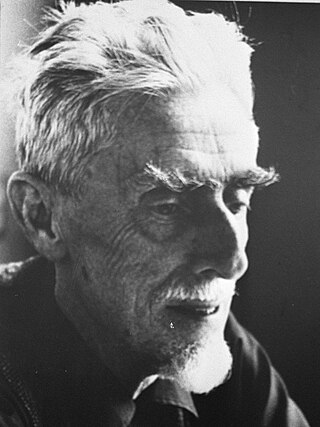
Maurits Cornelis Escher was a Dutch graphic artist who made woodcuts, lithographs, and mezzotints, many of which were inspired by mathematics. Despite wide popular interest, for most of his life Escher was neglected in the art world, even in his native Netherlands. He was 70 before a retrospective exhibition was held. In the late twentieth century, he became more widely appreciated, and in the twenty-first century he has been celebrated in exhibitions around the world.

Katsushika Hokusai, known mononymously as Hokusai, was a Japanese ukiyo-e artist of the Edo period, active as a painter and printmaker. His woodblock print series Thirty-Six Views of Mount Fuji includes the iconic print The Great Wave off Kanagawa. Hokusai was instrumental in developing ukiyo-e from a style of portraiture largely focused on courtesans and actors into a much broader style of art that focused on landscapes, plants, and animals. His works had a significant influence on Vincent van Gogh and Claude Monet during the wave of Japonisme that spread across Europe in the late 19th century.

Pieter Bruegelthe Elder was among the most significant artists of Dutch and Flemish Renaissance painting, a painter and printmaker, known for his landscapes and peasant scenes ; he was a pioneer in presenting both types of subject as large paintings.
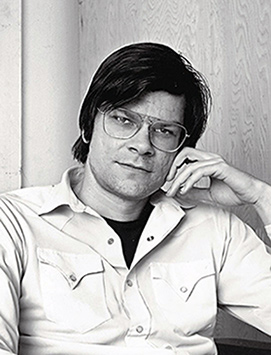
Robert Smithson was an American artist known for sculpture and land art who often used drawing and photography in relation to the spatial arts. His work has been internationally exhibited in galleries and museums and is held in public collections. He was one of the founders of the land art movement whose best known work is the Spiral Jetty (1970).
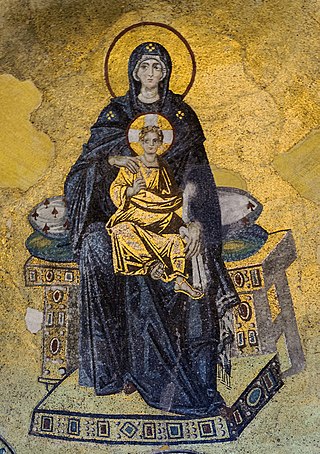
Religious art is a visual representation of religious ideologies and their relationship with humans. Sacred art directly relates to religious art in the sense that its purpose is for worship and religious practices. According to one set of definitions, artworks that are inspired by religion but are not considered traditionally sacred remain under the umbrella term of religious art, but not sacred art.

The Vitruvian Man is a drawing by the Italian Renaissance artist and scientist Leonardo da Vinci, dated to c. 1490. Inspired by the writings of the ancient Roman architect Vitruvius, the drawing depicts a nude man in two superimposed positions with his arms and legs apart and inscribed in both a circle and square. It was described by the art historian Carmen C. Bambach as "justly ranked among the all-time iconic images of Western civilization". Although not the only known drawing of a man inspired by the writings of Vitruvius, the work is a unique synthesis of artistic and scientific ideals and often considered an archetypal representation of the High Renaissance.

Rangoli is an art form that originates from the Indian subcontinent, in which patterns are created on the floor or a tabletop using materials such as powdered limestone, red ochre, dry rice flour, coloured sand, quartz powder, flower petals, and coloured rocks. It is an everyday practice in many Hindu households; however, making it is mostly reserved for festivals and other important celebrations as it is time-consuming. Rangolis are usually made during Diwali or Tihar, Onam, Pongal, Ugadi and other Hindu festivals in the Indian subcontinent, and are most often made during Diwali. Designs are passed from one generation to the next, keeping both the art form and the tradition alive.

Sandpainting is the art of pouring coloured sands, and powdered pigments from minerals or crystals, or pigments from other natural or synthetic sources onto a surface to make a fixed or unfixed sand painting. Unfixed sand paintings have a long established cultural history in numerous social groupings around the globe, and are often temporary, ritual paintings prepared for religious or healing ceremonies. This form of art is also referred to as drypainting.

Kolam, also known as Muggu, Tarai Alangaram and Rangoli is a form of traditional decorative art that is drawn by using rice flour as per age-old conventions. It is also drawn using white stone powder, chalk or chalk powder, often along with natural or synthetic color powders. Its part of the South Indian culture and found across all South Indian States. It can be found in some parts of Goa and Maharashtra. Since the South Indian diaspora is worldwide, the practice of kolam is found around the world, including in Sri Lanka, Singapore, Malaysia, Indonesia, Thailand and a few other Asian countries. A kolam or muggu is a geometrical line drawing composed of straight lines, curves and loops, drawn around a grid pattern of dots. It is widely practised by female family members in front of their house entrance, although men and boys also practice this tradition. The similar regional versions of kolam with their own distinctive forms are known by different names in India: raangolee in Maharashtra, aripan in Mithila, alpona in West Bengal and hase and rangole in Kannada in Karnataka. More complex kolams are drawn and colors are often added during festival days, holiday occasions and special events.
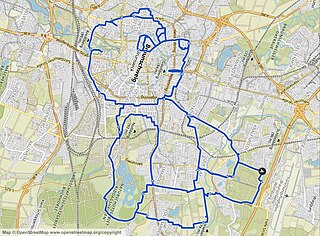
GPS drawing, also known as GPS art, is a method of drawing where an artist uses a Global Positioning System (GPS) device and follows a pre-planned route to create a large-scale picture or pattern. The .GPX data file recorded during the drawing process is then visualised, usually overlaying it as a line on a map of the area. Artists usually run or cycle the route—while cars, vans, boats and aeroplanes are utilized to create larger pieces.

Marko Djurdjević is a German illustrator and concept artist of Serbian descent, best known for his character designs. He works for Marvel Comics, and has produced a large body of cover art, as well as promotional designs, character concepts, and interior artwork. He lives in Berlin with his wife, Jelena Kevic Djurdjevic, who is also an artist and illustrator.

Augustin Hirschvogel was a German artist, mathematician, and cartographer known primarily for his etchings. His thirty-five small landscape etchings, made between 1545 and 1549, assured him a place in the Danube School, a circle of artists in 16th-century Bavaria and Austria.

Andrew Clemens was a sand artist from Iowa in the United States. Clemens formed his pictures by compressing natural colored sands inside chemists' jars to create his works of art.
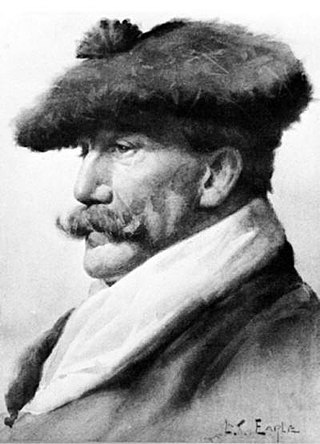
Harry Fenn was an English-born American illustrator, landscape painter, etcher, and wood engraver. From 1870 to around 1895 he was the most prominent landscape illustrator in the United States. He is also noted for his illustrations of Egypt, Palestine and the Sinai.
Timothy Akis, born around 1944 in Tsembaga village, Simbai Valley, Madang Province, Papua New Guinea, died in 1984, was a Papua New Guinean artist. His art consisted primarily in imaginative pen and ink drawings and batiks inspired by his country's wildlife.

Islamic geometric patterns are one of the major forms of Islamic ornament, which tends to avoid using figurative images, as it is forbidden to create a representation of an important Islamic figure according to many holy scriptures.
James F. Denevan is an American artist who creates temporary land art. He is also the founder of Outstanding in the Field, a traveling farm dinner series.
Joe Feddersen is a Colville sculptor, painter, photographer and mixed-media artist. He is known for creating artworks strong in geometric patterns reflective of what is seen in the environment, landscape and his Native American heritage.
Andres Amador is an American artist, known for his large-scale organic sand drawings.
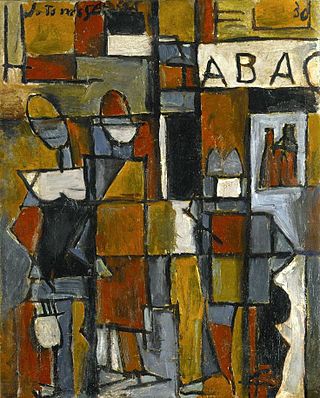
Universal Constructivism was a style of art created and developed by Joaquín Torres-García. Through the study and incorporation of basic geometric structure (Constructive) in the ancient and modern world creates the ability to create art that will be meaningful (Universal) to anyone who has viewed his artworks. He took the principles of Constructivism that Russian artists had developed in the 1920s and had influenced De Stijl and Bauhaus movements, and integrated what he considered to be universal pictographs, such as those for sun, moon, man, and woman. The goal of this art movement was to seek for the definition of what it means to be American by dominating constructive art and the use of primitive art that was rooted in the traditions of the continent. This style is best known for its synthesis of grid compositions and schematic signs. When Torres-García started Taller Torres Garcia in 1944, many of the participants incorporated Universal Constructivism into their own work. And later, the style influenced North American artists, such as Adolph Gottlieb and Louise Nevelson.
















